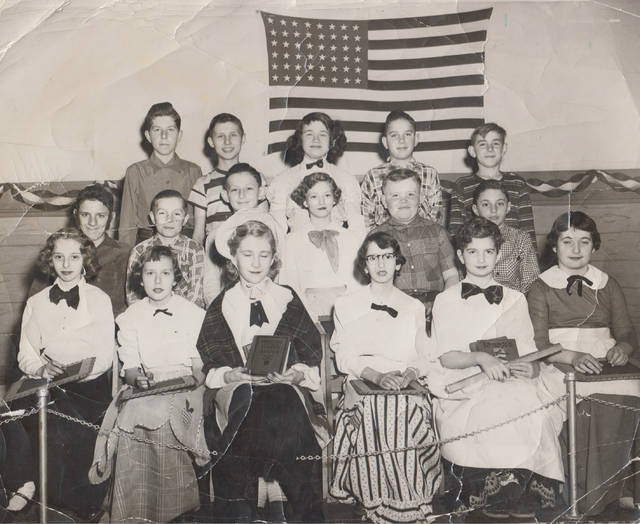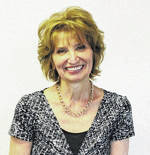1952 – 66 YEARS AGO
Word was spreading locally that someone was deliberately interfering with the television reception of West Pittston residents, especially during the evening hours when viewership was high. Pete Krenitsky ,of Duryea, an employee of Barton’s Store in Pittston decided to investigate the mysterious interference. Krenitsky, along with assistants James Chimento, of Pittston, and Michael Czar, of Sebastopol, obtained a list of every TV set owner who was experiencing the interruptions in service and had each turn off their sets during which time he made tests of boosters and antennas. All checked out. Finding that the most interference was experienced in the York, Washington and Park Street areas, Krenitsky was able to narrow his search and found a resident operating a custom-built FM receiving unit in his home. When the unit was turned off, clear reception returned to residents’ sets. The FM unit owner had no idea he was the source of the reception problem. Krenitsky was lauded locally as the “TV Man of the Year.” According to the Popular Mechanics website, “Radio-frequency interference occurs when the signal emitted by one device gets unintentionally picked up by another. Some interference is due to badly shielded wires or components, or if too many gadgets are crowded into one spectrum.”
1953 – 65 YEARS AGO
Prior to Amadeo Pancotti receiving the Carnegie Medal in 1959 for his heroism during the Knox Mine Disaster, an article in the Sunday Dispatch lists the following gentlemen as receiving the prestigious medal. Created in 1904 by Andrew Carnegie, the Carnegie Hero Fund Commission awards the medal to individuals who risk their lives saving or attempting to save others.
John C. Scureman, of West Pittston, rescued Karl A. Keller, 11, from electric shock on March 24, 1907. Scureman grasped the ankle of the boy, who lay unconscious holding a live electrical wire. Scureman pulled Keller free from the wire but suffered a tremendous shock while coming in contact with another downed wire. Scureman was hospitalized.
Thomas Huntley, of Pittston, helped to rescue John R. Eustice from an Inkerman mine cave-in on Aug. 22, 1907. Eustice and four others were trapped by a caving roof. Huntley, with the assistance of three others, dug Eustice from under the coal and debris where he lay injured and carried him to safety.
Luther J. Heal, of Pittson, saved Joseph Collins, 7, from a mad dog on May 6, 1907. Heal saw the dog bite his son and then start toward Joseph. Heal pursued the dog which bit and held on to his hand as he attempted to grab it. He held the dog under both knees, until it was shot.
Edward F. Norton, of Pittston, helped to save Sylvester W. McKeon from a mine cave-in on May 8, 1917. Sylvester, 12, and another boy entered the chamber of an old mine to gather coal. Loose rock at the entrance of the cave fell, burying Sylvester up to his hips. The other boy was buried to his chest. With another cave-in imminent, Norton began digging the earth away from McKeon with his hands. After he had removed the earth, another man descended the hole and assisted him. Norton then carried Sylvester to the top of the hole. The other man aided in the rescue of the other boy. During the night. there was another fall of earth that filled the entrance to the chamber.
James M. Flanigan, of Pittston, rescued William Derrig and John W. Mullery in a mine after an explosion in Inkerman on May 7, 1909. Following an explosion of gas, Flanigan entered the mine and brought out Derrig. He returned, even though others refused to go with him. Both Derrig and Mullery were severely injured, the former dying one week later. Flanigan’s hands were burned from beating out fire in the men’s clothing.
Andrew J. Devers, of Port Griffith, helped to save James E. Dougher from suffocation in the Sebastopol section of Pittston on Jan. 10, 1911. Following a mine explosion, Devers enlisted four other men to go with him into the mine. One-half mile from the shaft, they found Dougher who was overcome by fumes. He was carried into fresh air and revived.
1969 – 49 YEARS AGO
Navy Commander William B. Rennie, of Pittston, was awarded the Distinguished Flying Cross for heroism, The Navy Commendation Medal with Combat “V” and his 15th Air Medal while serving as section leader with Fighter Squadron 211 aboard the attack aircraft carrier USS Bon Homme Richard in Vietnam. The squadron designated the “Checkmates” was the final squadron to fly the F-14A Tomcat.
1981 – 37 YEARS AGO
Pittston Area High School thespians were set to present their production of “Bye Bye Birdie.” Adele Tavella and musical director Curtis Roberts directed the play. Mike Lombardo, Phil Rosso, Billy Joe Herbert, Paul Reedy, Jim Nayavich, Kris Graboski, Karen McMullen, Cassandra Tereschak, Margie Corcoran, Terri Cappiloni, Annamarie Tavella, Cindy Forlenza, Cathy Eshelman, Nancy Zapko, Chris Appnel and Lauren Marsh performed. The Broadway production of “Bye Bye Birdie” opened in April 1960 and closed after 607 performances in October 1961. The play spawned the popular movie version in 1963, based on Elvis Presley’s enlistment into the army.
1989 — 29 YEARS AGO
Mayor Thomas Walsh issued a proclamation designating Feb. 16 as Lithuanian Independence Day in Pittston. A flag-raising ceremony was planned for city hall. Present at the signing were Annamarie Sewatsky, Frances Shoppel, Nellie Bayoras Romanas. Kenneth Scaz, Carmen Falcone, Celestine Swantkowski, Anna Rovala, Adele Brooks, Mary Chorba, John Argo and Maria Capolarella. The Act of Independence of Lithuania was signed by its council on Feb. 16, 1918 to announce its independence from Germany.
1999 – 19 YEARS AGO
Judge Thomas F. Burke Jr., of West Pittston, formally announced his candidacy for election to a full term on the Luzerne County Bench. A Vietnam veteran who was awarded the Bronze Star for Meritorious Service, Burke practiced law for 25 years prior to his judgeship and looked forward to serving the people of Luzerne County “honorably and honestly.” Judge Burke was appointed to the bench in April 1998 by Governor Tom Ridge.
2001 – 17 YEARS AGO
Marie Griglock, of Hughestown, wanted to be sure that four residents responsible for the creation of Robert Yaple Memorial Park were recognized for their efforts. So she requested Felix Rossi, Gene Anderson, Margaret Monk and Frank “Hank” Walker be presented with citations honoring their vision to transform a weed-covered field into a recreation haven for borough families to enjoy. All four were asked by council to be members of the Hughestown Park and Recreation Board around 1971. Each worked tirelessly to formulate plans and realize the construction of the park. According to the luzernecounty.org website, “The municipal park contains over ten acres of land and is available for playground, basketball, tennis, and baseball activities. A Centennial Pavilion allows borough organizations and families to utilize the area for special events and birthday parties for our youngsters. The area is next to the children’s playground making it very useful for the youngsters.”
THIS DAY IN HISTORY
1805 — Sixteen-year-old Sacajawea, the Shoshoni guide for Lewis & Clark, gives birth to a son with Meriwether Lewis serving as midwife.
1858 — Fourteen-year-old Bernadette Soubirous, a French miller’s daughter, claims to have seen an apparition of the Virgin Mary at Lourdes.
1904 — President Theodore Roosevelt proclaims strict neutrality for the United States in the Russo-Japanese War.
1910 — Theodore Roosevelt Jr. and Eleanor Alexander announce their wedding date as June 20, 1910.
1936 — The Reich arrests 150 Catholic youth leaders in Berlin.
1945 — The meeting of President Franklin Roosevelt, Prime Minister Winston Churchill and Marshal Joseph Stalin in Yalta, adjourns.
1951 — U.N. forces push north across the 38th parallel for the second time in the Korean War.
1965 — President Lyndon Johnson orders air strikes against targets in North Vietnam, in retaliation for guerrilla attacks on the American military in South Vietnam.
BORN TODAY
1847 — Thomas Alva Edison, prolific American inventor who jointly or singly held over 1,300 patents
1898 — Leo Szilard, physicist, instrumental in the Manhattan Project
1907 — William J. Levitt, U.S. businessman and community builder who led the postwar housing revolutions with his Levittown military housing projects. Housing developments were planned and built by Bill Levitt and his brother, architect Alfred Levitt.





